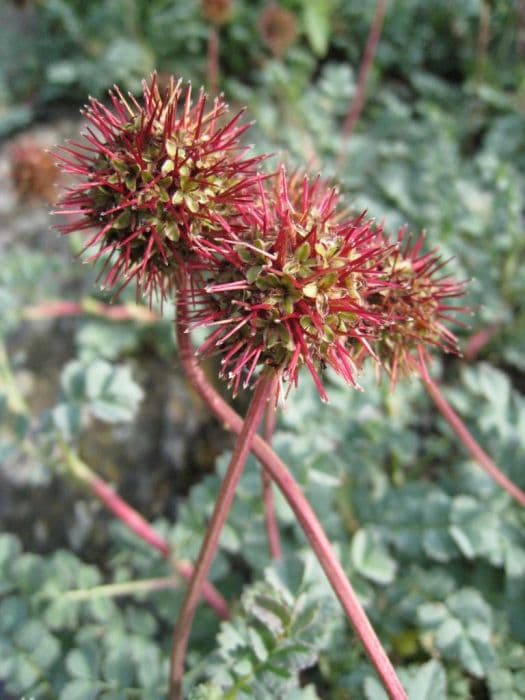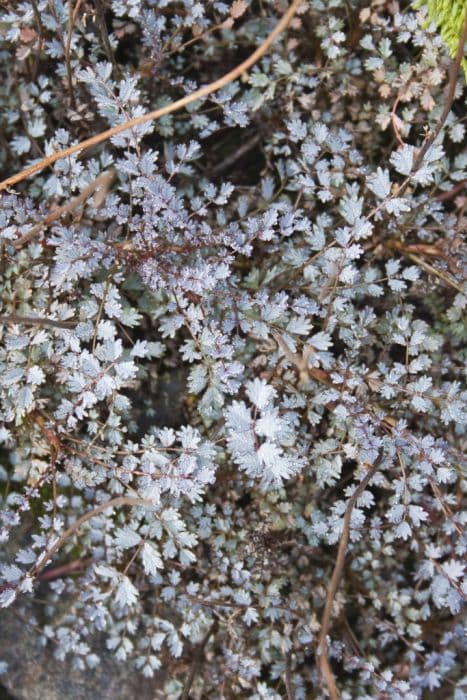Pearlbush 'The Bride' Exochorda × macrantha 'The Bride'

ABOUT
'The Bride' is a medium-sized, rounded deciduous shrub with arching branches bearing oblong, pale green leaves; flowers 3cm in width, white, in short racemes from late spring
About this plant
 Names
NamesFamily
Rosaceae
Synonyms
Pearl Bush, The Bride Exochorda
Common names
Exochorda × macrantha 'The Bride'.
 Characteristics
CharacteristicsLife cycle
Perennials
Foliage type
Deciduous
Color of leaves
Green
Flower color
White
Height
4-5 feet (1.2-1.5 meters)
Spread
4-5 feet (1.2-1.5 meters)
Plant type
Shrub
Hardiness zones
5
Native area
China Korea
Benefits
 General Benefits
General Benefits- Ornamental Appeal: Pearl Bush 'The Bride' has an attractive, arching habit and produces an abundance of white, pearl-like buds that open to showy flowers, enhancing garden aesthetics.
- Seasonal Interest: It blooms profusely in spring, offering a spectacular seasonal display that can be a focal point in any garden.
- Low Maintenance: Once established, it is relatively low maintenance, requiring minimal pruning and care, which can be ideal for novice gardeners or those with limited time.
- Drought Tolerance: After establishment, this plant demonstrates some drought tolerance, making it suitable for gardens in drier climates or for water-efficient landscaping.
- Habitat Friendly: The dense foliage and blossoms can provide shelter and some food sources for local wildlife, such as birds and beneficial insects.
- Adaptable: Pearl Bush 'The Bride' is adaptable to a variety of soil types, although it prefers well-drained soils, making it a versatile choice for many garden settings.
- Cold Hardy: It is reasonably cold hardy, capable of withstanding cooler temperatures, which is beneficial for gardens in temperate regions.
- Use in Design: This plant can be used in various design settings, including as a standalone specimen, in mixed borders, or in foundation plantings for visual interest.
 Medical Properties
Medical PropertiesThis plant is not used for medical purposes.
 Air-purifying Qualities
Air-purifying QualitiesThis plant is not specifically known for air purifying qualities.
 Other Uses
Other Uses- The Pearl Bush can be used in floral arrangements, particularly for weddings and celebrations due to its white, cascading flowers that symbolize purity and elegance.
- It serves as a natural backdrop for photographers who specialize in springtime outdoor portraiture, taking advantage of its blooming period.
- This plant can be integrated into a sensory garden for its distinctive texture and the gentle rustling sound its leaves make in the breeze, providing an auditory element.
- In garden design, the arching branches of The Pearl Bush can be trained to create a living arch or pergola, providing a dynamic garden structure.
- Its wood can be used for crafting small decorative items or for inlay work in woodworking, although this is not a common use due to the plant's primary value as an ornamental.
- During the off-season, the branches of The Pearl Bush can be utilized in wreath-making, where they add a woody aesthetic and structure to the decoration.
- For educational purposes, The Pearl Bush is a good candidate for demonstrating pruning techniques to horticulture students, thanks to its vigorous growth and need for shaping.
- Its dense growth habit provides shelter and nesting sites for small birds, supporting local biodiversity in a garden setting.
- The Pearl Bush can be used in art classes or botanical illustration courses as a subject for drawing and understanding plant forms and flower structures.
- With its rapid growth, the shrub can be employed in theatrical set designs or temporary screens within landscapes for privacy or zoning in events.
Interesting Facts
 Feng Shui
Feng ShuiPearl Bush is not used in Feng Shui practice.
 Zodiac Sign Compitability
Zodiac Sign CompitabilityPearl Bush is not used in astrology practice.
 Plant Symbolism
Plant Symbolism- Purity and Innocence: The 'The Bride' cultivar of Exochorda × macrantha has pure white flowers, which are commonly associated with innocence and purity, much like that of a bride on her wedding day.
- New Beginnings: The blooming of these white flowers in the spring symbolizes the idea of new beginnings and fresh starts, reflecting the start of a new life in marriage.
- Elegance and Simplicity: Its simple yet elegant blooms can represent the beauty of simplicity and the understated grace that can be found in minimalist aesthetics.
- Peace and Tranquility: The color white is often linked to peace and tranquility, which may be reflected in the presence of this plant in a garden or landscape.
 Water
WaterThe Pearl Bush should be watered deeply and thoroughly, allowing the water to reach the roots. During the growing season, water the plant when the top inch of soil feels dry, which typically means watering once a week. Adjust the frequency during hotter, drier periods, possibly increasing to twice a week. Each watering session should provide about 1-2 gallons of water, depending on the size of the shrub and the conditions. In winter, reduce watering since the plant is not actively growing and excess water can lead to root rot.
 Light
LightThe Pearl Bush thrives best in full sun to partial shade conditions. It prefers a spot that receives at least 6 hours of direct sunlight daily, but it can also tolerate some light afternoon shade. The ideal spot would be one that is bright and sunny in the morning with some protection from the intense sun in the afternoon.
 Temperature
TemperatureThe Pearl Bush can endure a range of temperatures and is quite hardy. It is able to survive minimum winter temperatures down to about -20°F and it is comfortable in summer temperatures up to 95°F. The ideal temperature range for this plant is between 60°F and 75°F for optimum growth and blooming.
 Pruning
PruningPruning is important for the Pearl Bush to maintain its shape and encourage prolific blooming. Prune immediately after flowering, which typically means cutting back in late spring or early summer. Remove any dead or damaged branches, and thin out as needed to improve air circulation. Pruning can also stimulate new growth, which will carry next year's flowers, so it is advised to avoid cutting back the bush too late in the season.
 Cleaning
CleaningAs needed
 Soil
SoilThe Pearl Bush prefers well-drained, loamy soil rich in organic matter. A mixture of garden soil, peat, and perlite can provide the necessary drainage and nutrient content. Keep the pH slightly acidic to neutral, around 6.0 to 7.0, for optimal growth.
 Repotting
RepottingThe Pearl Bush doesn't require frequent repotting and typically does well when left undisturbed. You may consider repotting every 3-5 years or when the plant shows signs of being root-bound.
 Humidity & Misting
Humidity & MistingThe Pearl Bush is quite adaptable but prefers moderate humidity levels. While it doesn't have strict humidity requirements, average room humidity should be sufficient for its growth.
 Suitable locations
Suitable locationsIndoor
Place in bright, indirect light; avoid extreme temps.
Outdoor
Full sun to partial shade, shelter from strong winds.
Hardiness zone
5-8 USDA
 Life cycle
Life cycleThe Pearl Bush 'The Bride' begins its life as a seed which, after experiencing stratification through a cold period, germinates in spring. As a seedling, it develops a root system and foliage, eventually forming a small shrub. The young shrub grows annually, increasing in size and branching, into a mature plant capable of flowering, typically taking several years to reach this stage. Fully grown, it produces numerous white flowers primarily in late spring, attracting pollinators. After pollination, it develops seed pods that dry and release seeds in late summer to autumn. The plant may undergo this reproductive cycle annually, while individual specimens can live for many years, going through periods of dormancy in the winter months.
 Propogation
PropogationPropogation time
Early Spring
Propogation: Exochorda × macrantha 'The Bride', commonly known as the Pearl Bush, is often propagated in late spring through softwood cuttings. The popular method involves selecting a healthy, non-flowering stem and cutting a piece around 4 to 6 inches (10 to 15 centimeters) long. The lower leaves should be removed, and the cut end dipped in rooting hormone to encourage root development. This cutting is then placed in a well-draining potting mix and kept in a humid environment until roots establish, which typically takes a few weeks. Covering the pot with a plastic bag or placing in a propagator can help retain moisture and warmth to improve the chances of successful root growth.









